Hunga Tonga-Hunga Ha’apai as seen in September 2017
see on Google Maps
see on Google Maps
Image: 2017 DigitalGlobe
From Earther by Maddie Stone
Hunga Tonga-Hunga Ha’apai wasn’t supposed to last.
The cloud of volcanic ash that became island-shaped in early 2015, about a month after an underwater volcano erupted in the South Pacific Kingdom of Tonga, was expected to be washed away by the ocean in three to four months.
Hunga Tonga with the GeoGarage platform (Linz chart)
And according to new research led by NASA, it could last for decades more.
“We haven’t had an island like this sustain itself in 50 years,” Jim Garvin, chief scientist of NASA’s Goddard Space Flight Center in Greenbelt, Maryland, told reporters at a press conference at the American Geophysical Union meeting in New Orleans yesterday.
In late December 2014 into early 2015, a submarine volcano in the South Pacific Kingdom of Tonga erupted, sending a violent stream of steam, ash and rock into the air.
When the ash finally settled in January 2015, a newborn island with a 400-foot summit nestled between two older islands – visible to satellites in space.
The newly formed Tongan island, unofficially known as Hunga Tonga-Hunga Ha'apai after its neighbors, was initially projected to last a few months.
Now it has a 6- to 30-year lease on life, according to a new NASA study.
As Garvin explained, the shallow submarine eruption that birthed Hunga Tonga-Hunga Ha’apai was special.
Not only did the eruption spew lava, “it also produced some of the explosive magma water interactions that were the hallmark of the eruption that produced Surtsey,” an island off the coast of Iceland that formed in the 1960s and has persisted to this day.
Hunga Tonga-Hunga Ha'apai is the first island of this type to erupt and persist in the modern satellite era, it gives scientists an unprecedented view from space of its early life and evolution.
The new study offers insight into its longevity and the erosion that shapes new islands.
Understanding these processes could also provide insights into similar features in other parts of the solar system, including Mars.
Garvin believes Hunga Tonga-Hunga Ha’apai has outlived its expected lifespan because of chemical interactions between warm seawater and volcanic material, which caused its rocky shorelines to harden shortly after the eruption.
If this hunch is correct, it would make the new island the first long-lived “surtseyan” island of the satellite record.
Scientists are now monitoring the volcanic island closely, using monthly satellite images to track its changing coastlines, and nearshore measurements with research vessels to map the seafloor.
They’ve watched it change dramatically.
Initially, Hunga Tonga-Hunga Ha’apai was fairly oval-shaped, rising 400 feet from its coastlines to a central tuff cone.
Over time, the entire island has become thinner and more stretched out as material erodes off the tuff cone and collects along the coastlines.
The first big change came in April 2015, when satellite images revealed that the cliffs marking the southern rim of the crater had collapsed.
A few weeks later, the last remnants of the crater wall were gone, opening a central lake to the ocean.
A high-resolution satellite image of Hunga Tonga-Hunga Ha’apai right after it formed, in January 2015.
Image: Pleiades-1A ©2015 CNES Distribution Airbus DS
At that time, Garvin explained, there was a risk of ocean waves impacting the tall cliffs on the inside of the crater, accelerating the cone’s collapse.
But within a few more weeks, a sandbar had formed to protect the crater lake.
That feature has persisted until this day.
The other major change has been the growth of a large peninsula to the northeast.
By April 2015, that peninsula connected Hunga Tonga-Hunga Ha’apai to another nearby island.
It has continued to widen over time.
To their surprise, the researchers are finding that the total volume of the island, as estimated using elevation models, has remained fairly stable after the first few months.
Hunga Tonga-Hunga Ha’apai is now expected to survive for anywhere from six years to about three decades, depending on how quickly the tuff cone at its center is destabilized.
“This island is fighting for its life,” Garvin said.
“And our predictions suggest we’ve got potentially another decade [or more] to watch this thing evolve from space.”
Changes to Hunga Tonga-Hunga Ha’apai’s shoreline over time are overlain atop a September 2017 satellite image.
Image: NASA/©DigitalGlobe
In addition to just being cool as hell, tracking this island’s evolution could help us understand the history of other worlds, namely, our friendly neighborhood Red Planet.
As Garvin explained, Mars features fields of small volcanoes “very similar to Hunga Tonga-Hunga Ha’apai in appearance, but we don’t know the context in which they formed.”
in brown, erosion areas
NASA 2017 Digital Globe
The question now is, are the different stages of the Earthly island’s evolution evident in volcanic features on Mars?
And if so, does that tell us something about when Mars last had water, and how deep and widespread that water was?
“We think [this is] a real opportunity for learning,” Garvin said.
Digital elevation model showing the topography of Iceland’s Surtsey island (left) and Hunga Tonga-Hunga Ha’apai (right).
Image: NASA This has been your periodic reminder that Earth is a dynamic, amazing world, and we’re damn lucky to live on it.
Links :
- NASA : NASA shows new Tongan Island made of tuff stuff, likely to persist years / New Island Made of Tuff Stuff / Facebook NASA / The Birth of a New Island: Press Materials
- The Guardian : Pacific pop-up: island that rose from the ashes might last 30 years
- DailyMail : The remarkable island born from an underwater volcanic eruption: NASA reveals new Pacific island Hunga Tonga-Hunga Ha'apai formed in 2015 and could survive for up to 30 years
- National Geographic : New Volcanic Island May Survive Much Longer Than Expected
- GeoGarage blog : Image of the week : birth of a new island in Tonga / New volcanic island unveils explosive past
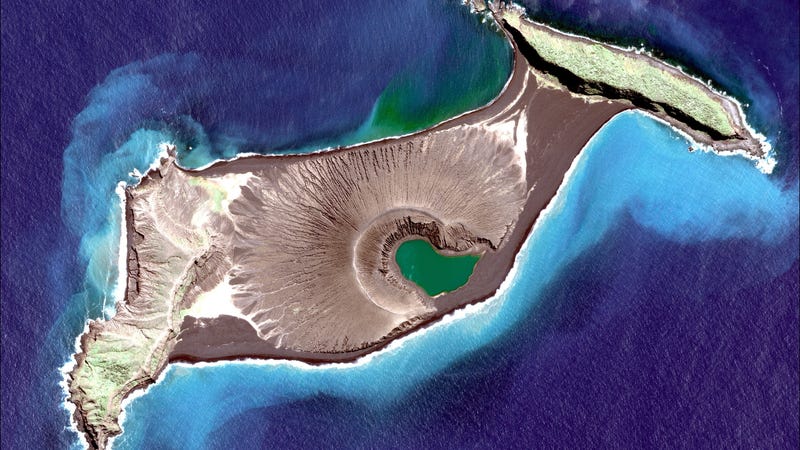

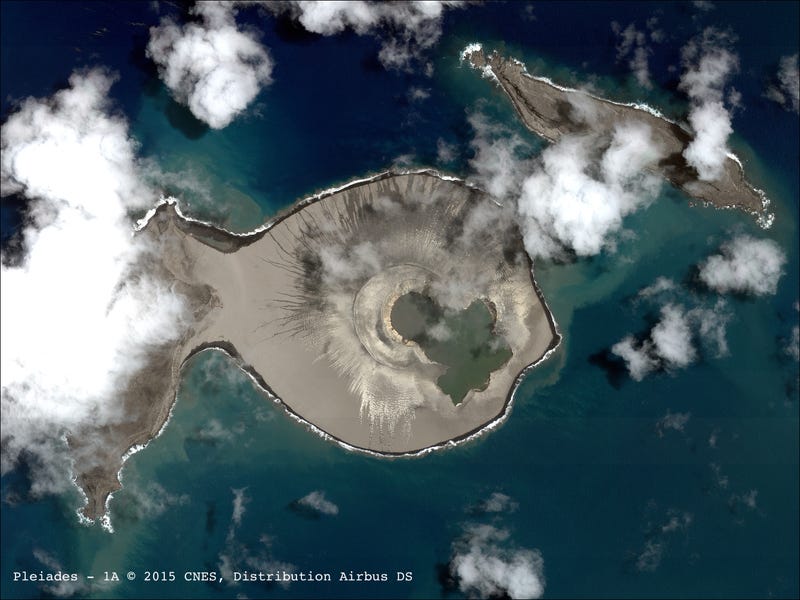
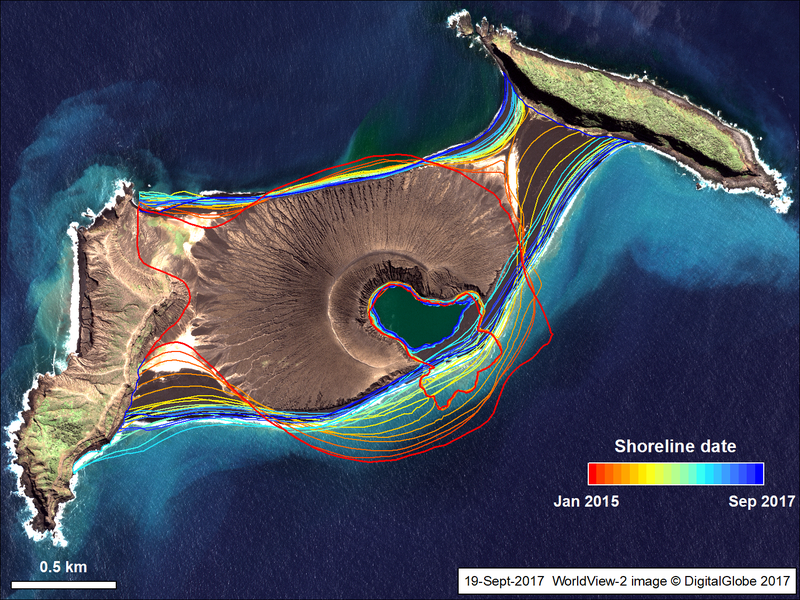
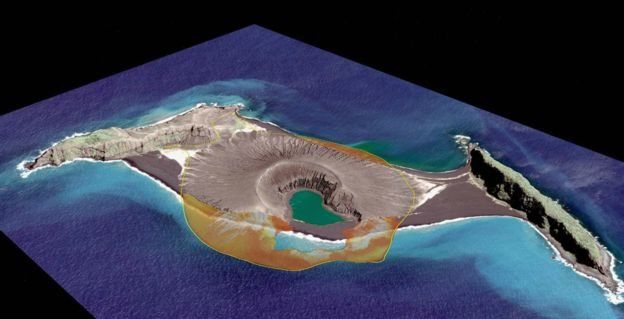
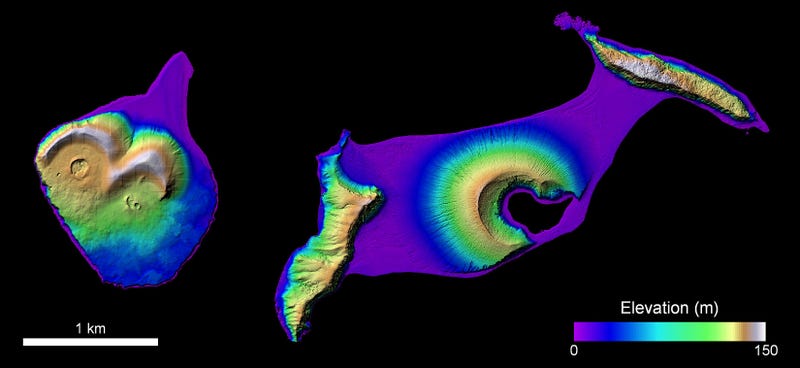
Facebook : Land ho visiting a young island
ReplyDeleteNASA : Land Ho! Visiting a Young Island
ReplyDelete